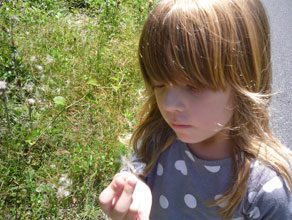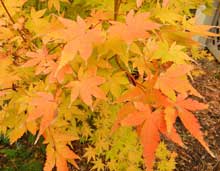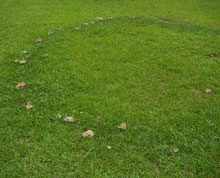 I can’t help it; I just make song lists and plant lists wherever I go – even on a recent family vacation with my best friend and granddaughter.
I can’t help it; I just make song lists and plant lists wherever I go – even on a recent family vacation with my best friend and granddaughter.
We traveled up the Eastern shore of Virginia to Chincoteague and Assateague Islands where ponies are the most popular tourist attractions, right behind the blue crab. While much of the lower east coast was getting soaked by a tropical storm, we were on this little spit of land hanging off Maryland into the Atlantic Ocean. It was unseasonably cool, sunny and lovely weather.
The Eastern shore of Virginia is relatively undeveloped and along highway 13 north there are scattered clusters of farms, nurseries, chicken processors like Tyson, and towns. The Chesapeake Bay Bridge Tunnel undoubtedly sparked some of the newer businesses, because it was historically and geographically isolated before that engineering feat. We drove over to Assateague and could see the red and white light house peeking over the trees. Because it is a national park/seashore, I bought a senior lifetime pass for admission to any national park for $10. This vacation just kept getting better.
We drove to the beach and visited the wonderful nature center, bought gifts and books, and sorry, no ponies. But with boundless determination and detective work we decided to go out the next day and try again to find them. After breakfast we climbed in the walking shoes, and took the woodland trail which has a lookout and good chance of our seeing wild ponies. Pathfinder (not only the name of a car, but a great name for a car on our adventure) with bug spray, water bottles, hats. Good thing we left the bug spray in the car, because the mosquitoes were waiting hungrily around every dead pine tree. It was a cathedral of trees killed by Southern pine beetles. Many were left standing and provide habitat to flocks of woodpeckers/northern flickers/nuthatches, butterflies, and other wildlife.
I began to notice most of the same plants that we have at home in the maritime forests. There were mature Sabal palmettos, red oaks, water oak, persimmon, red maple and thick brush understory now receiving so much more light because of the dead pines. Shrubs and vines were also familiar: wax myrtle, St. Andrew’s cross, poison ivy, and smilax were doing well and goldenrod covered large swathes of the forest floor. Wildflowers that we saw were white and purple clover, yarrow, Venus’ looking glass, and dandelion. My granddaughter calls them “make a wish flower.” Thistles also were in the downy stage and most had finished blooming. There were lots of seedlings with their rough prickly leaves scattered on the ground. I spied the broad leaved plantain in case we got itchy from the mosquitoes and poison ivy, and we all ate the new growth on the Smilax. It is a relative of asparagus and very tasty.
At the nature center they have a constructed wetland or raingarden that probably had some diversity when it was originally planted, but the goldenrod has more or less taken the lead in capturing nutrients and is probably stunning in the fall. Main Street Chincoteague boasted some gorgeous climbing roses which I think were “New Dawn.” The fragrance is so rose and the clusters of flowers pale pink and perfect. There were other great plants blooming and obviously gardening is a serious business there. I probably saw five different kinds of hydrangeas: blue and pink lace caps, mop head, oak leaf, and paniculata (not blooming yet). Oriental lilies, Itea, great blue blooming catnips and phlox were blooming in well-tended gardens.
Back to the pony quest. As we got up to the overlook a couple who had passed us by said that the ponies were grazing, and you could see them with binoculars. A very nice man on the deck let us look and showed us where they were. Better still on the walk back to the Pathfinder we saw a little brown bunny who wasn’t scared at all of us. So we added him to the list too.
Pictured Above: The writer’s granddaughter Clara, making a wish








